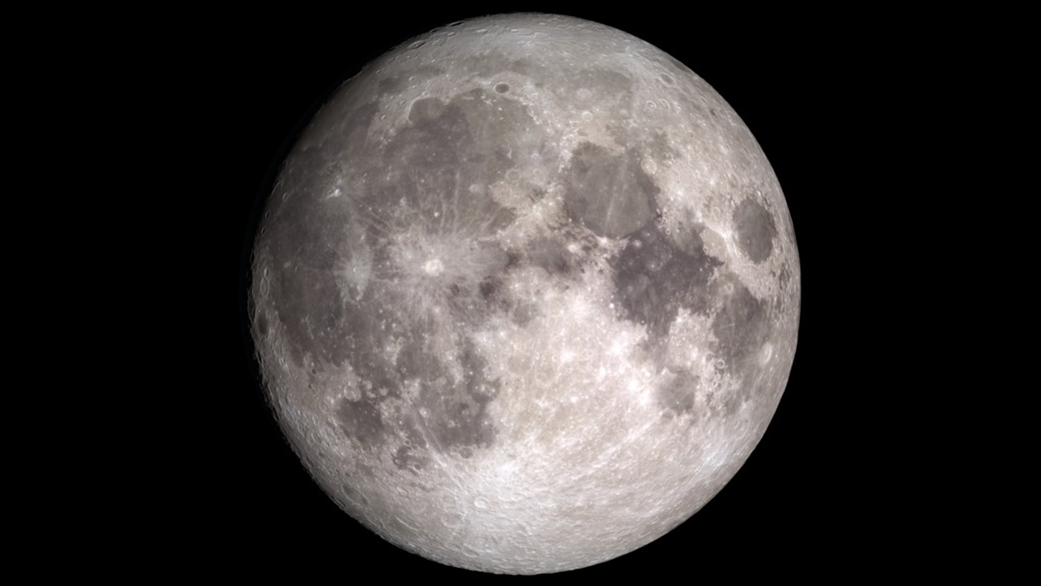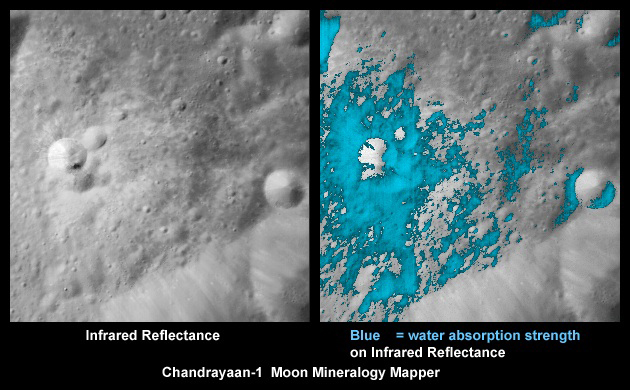Water is widespread across lunar surface
Contrary to initial analysis, it appears that water could be widely distributed and immobile throughout the surface of the Moon

If there is enough water and can be conveniently accessed, it can provide a valuable resource for future visitors. Image credit: NASA/Goddard Space Flight Centre
Water buried beneath the surface of the Moon was welcomed news upon its discovery, and new research now suggests that the water is more widely spread and not affected by whether it is day or night on the lunar surface. However, with this valuable resource being buried beneath the surface, it is far from easy to access.
This study can play a vital role in helping scientists understand how the water got there in the past, and how easy it is to retrieve for possible lunar missions in the future. If there is enough water that can be accessed relatively conveniently, then future astronauts could harness it for drinking water, breathable oxygen or even rocket fuel.
“We find that it doesn’t matter what time of day or which latitude we look at, the signal indicating water always seems to be present,” says Joshua Bandfield, a senior research scientist with the Space Science Institute in Boulder, Colorado, United States. “The presence of water doesn’t appear to depend on the composition of the surface, and the water sticks around.”
Previous studies, contradictory to latest revelation, suggested that there is more water trapped at latitudes closer to the lunar poles, and the strength of water varies according to the lunar day, which lasts 29.5 Earth days. From this, researchers proposed that water molecules can “hop” across the Moon, until they are captured in “cold traps” in the darkest depths of craters near the north and south pole. In terms of planetary science, a cold trap is an area cold enough to trap volatiles and water vapour, keeping it preserved for an extended period of time, possibly up to billions of years.
The recent revelation contradicts the old study, and much of the argument stems from the devils in the details for how the detection was achieved so far. The main evidence has come from remote-sensing instruments, which measured the intensity of sunlight reflected off the Moon’s surface. When water is present, these instruments will detect the spectral spike of the substance, it is typically at wavelengths close to three micrometers within the realm of infrared radiation.
However if the surface of the Moon becomes hot enough, it can “glow”, emitting light at a similar wavelength. This overlap is what has caused the controversy for the researchers, presenting the challenge of untwining the two. This requires an extremely high level of accurate temperature information.

Water-rich minerals (shown in light blue) have been seen in lunar craters by the Indian Space Research Organisation’s Chandrayaan-1 spacecraft. Image credit: ISRO/NASA/JPL-Caltech/USGS/Brown Univ.
Bandfield and his collaborators created an exciting new way of blending temperature information together to create a precise model. The Diviner instrument on NASA’s Lunar Reconnaissance Orbiter, or LRO took the measurements for the model, which was then applied to data gathered by the Moon Mineralogy Mapper. The Moon Mineralogy Mapper is a visible and infrared spectrometer, created by NASA’s Jet Propulsion Laboratory in Pasadena, California, United States, fitted on India’s Chandrayaan-1 lunar orbiter.
The results detailed ubiquitous and fixed water that could exist primarily in the form of hydroxyl. Hydroxyl is a more reactive relative of water, as it is missing a hydrogen atom, consisting of just an oxygen and a hydrogen atom. Due to its reactive nature, it doesn’t stick around in the free air for long, as it will attack or attach itself chemically to other molecules. Because of this, hydroxyl would have to be directly removed from minerals in order to avoid interaction with other molecules.
The results also suggest that the regular water, H2O, present on the Moon isn’t loosely attached to the surface. “By putting some limits on how mobile the water or the OH [hydroxyl] on the surface is, we can help constrain how much water could reach the cold traps in the polar regions,” says Michael Poston of the Southwest Research Institute in San Antonio, Texas, United States.
The analysis of water hidden away in the lunar surface could have major scientific implications. For starters, it could tell scientists how water is formed and stored on other rocky bodies in the Solar System. It could reveal a lot of the Moon’s past too. For instance, researchers suggest that hydroxyl and/or water could have been created from solar winds interacting with the lunar rocks. They also haven’t ruled out the possibility of these molecules being released by minerals deep within the Moon during its formation.
“Some of these scientific problems are very, very difficult, and it’s only by drawing on multiple resources from different missions that are we able to hone in on an answer,” says LRO project scientist John Keller of NASA’s Goddard Space Flight Centre in Greenbelt, Maryland, United States.
Keep up to date with the latest reviews in All About Space – available every month for just £4.99. Alternatively you can subscribe here for a fraction of the price!




